What is SEO (A Guide to Search Engine Optimization free)
What is SEO? A Guide to Search Engine Optimization
Search engine rating is a winner - takes - all games. The top three results are a rate of 30% - 10% click; By nine, it has fallen to just 2 percent. If the page does not match one for the relevant search terms, its full potential is not reached.
That's what search engine optimization (SEO) comes in. SEO covers these brands to cover organic traffic from the search engines, which has a proper term. SEO site architecture includes technological aspects as well as more creative elements like content creation and user experience.
Looks relatively simple. But SEO is an experimental target, even experienced digital marketers. A number of different, algorithm changes, and SEO strategies that work once, can suddenly be punished. To improve the site, your search engines need deep knowledge about "thinking" and how real people think and react with your web content. This mixture of use, web site architecture, and content creation makes search engine optimization feel like a hybrid. On one occasion, you ask yourself "what is SEO and how does it work?"
Google handles more than 3.5 billion searches per day. The search engine has scored the world's estimate of 1.9b websites, to reduce the relevant results from 0.5 seconds. So what's happening behind the scenes?
To retrieve related results, a search engine needs to do three things:
Create a list of pages on the web, or index
Get access to this list immediately
Decide which pages are related to every search
In the world of SEO, this process is usually described as crawling and index.
Creation and Indexing
Widgets are widely created widely on web pages linked to links. Search engines need to find these pages, understand what's on them, and store stats in a large number known as an index.
To do this, they are known as spiders or crawlers to scan the web for host domains. Crawler saves a list of all the servers they search and host them on websites. Then, they regularly visit each website and "crawl" for content, content type registration (text, video, JavaScript, etc.), and number of pages. Finally, they use code tags such as HREF and SRC to detect links on other pages, which they include in the list of sites to crawl. This allows the spiders to be indexed on a large scale of pages indexed pages, from page to page and in-index.
The search engine stores this information in a large physical database, which makes it search for any person when it remembers the data. Google has data centers around the world. His massive center estimation in Oklahoma, Perry Creek is 980,000 square feet. This network allows Google to store billions of pages in many machines.
Search engine crawl and index constantly, new additions page, deleted pages, new links, and fresh content. When someone finds out, billionaire potential answers have been fully updated to those seeking search engines.
What to do to do this is the result of their relevance and quality.
How to find the relevant search engine relevant relevant results
If hundreds of thousands of results are returned in the search term, then decide the best order to show the search engine finder?
Related results are not determined by the human team in the search engine headquarters. Instead, use the algorithm (mathematical equality and rules) to understand the intent of finding the engine, find relevant results, and then based on their authority authority and popularity.
In an effort to stop the black hat SEO, search engines are indispensable to show how to rank their algorithms to work well. He said, search marketers know that algorithmic decisions are based on more than 200 factors, including the following:
In an effort to stop the black hat SEO, search engines are indispensable to show how to rank their algorithms to work well. He said, search marketers know that algorithmic decisions are based on more than 200 factors, including the following:
- Material Type: Searchers find different types of content, news from news and photos to news. Preferred search engine intention types of content.
- Content quality: Search engines prefer useful and informative content. They are funny steps, but SEO's professionally means that it's full, original, objective and solved content.
- Content refresh: The search engine finds the latest results, comparable to other ranking factors. Therefore, among the two pieces deciding the different quality by different disorders, the most recent piece will appear first.Page popularity: Google still uses the variations of their original 1990s PageRank algorithm, which indicates the quality of the page by the number of links by the number of links.
- Website Quality: Bad quality, spam websites are torn down by search engines (below it over). Language: Everyone is not searching in English. Preferred search results as search engines in the same language.
- Location: Many searches are local (for example, "restaurants near me"); search engines understand it and when local results prefer.
Type of Search Engine results page features (SERP) features
In the early days of the search, the results were presented as a simple list of clear letters and links, as we saw in the previous image. Over the last few years, these standard results include SERP features, numerous results, including photos and additional information. When we look for the Philadelphia Coffee New England Patriot, for example, a special result comes with additional information that may be in the searcher's interest: .
You can not guarantee that your site features additional certificates, but you can help increase your likelihood:
Creates a website structure that understands both search engines and users.
Creating your content on this page is scanable for both search engines and users.
Schema markup, or managed code helps to crawl the site better understand the site.
The most common organic SERP features include:
- Rich Spippet: Extra Visual Component (e.g., review stars for restaurant listing) in a traditional result.

2. Feature Sample: Highlight block at the top of the search results page, often with the search source URL and summary summary link from source url.
3. People ask: Also known as related questions, these are a block of valuable related questions asked by the finders.
4. Knowledge Card: The main integrated panel shows important information about the search term. A fair example of the above shows a knowledge panel with their logo, company information, and social profiles.
5. Image pack (horoscope): Horizontal row of image links, appears to be visible where visual content is useful.
6. Quick Answer: Pops pop-ups when Google can respond to the searcher's query, as you search for the season where you're right now. Unlike significant patterns, there is no connection with the site.Layout for search marketers
Search engines prefer to return relevant, high-quality content based on the words used by people searching for information online. They do what pages they can find, build algorithm around the integration, and provide results in different parts of the presentation.
Understand how search engine finds and grade web pages, you better equipped to raise your websites and get more traffic. To do so, you will need a three-way SEO: strategy based on the page, and page.
What is the technical SEO?
An important step in classifying the SEO-art site is to rank and improve a website for the web site. Build a website on doubt technical basis and potentially you will not get results results, there is no difference in how high quality content is on your page. That is why web sites need to build such a way that helps to scroll the content and understand content.
There is no connection with the creation of technical SEO content, link building strategy, or content promotion. Instead, it focuses on site building and infrastructure. As search engines become more "intelligent," technical SEO best practices and have to be more modern to improve. He said, there are some basic barriers of technical SEO to carry on the board.
Url management and structure
The site's elaborate URL structure should be explained that users have access to crawl and useful. It does not mean that you have to map each page your site always holds; it will be impossible. But that means to define a logical flow of URLs, from the domain to the category. New creation can be included in this category when created.
Such websites that leave this stage end up with internal links with a wide range of subdomains and "orphan pages". This is not just a threat to consumers; it conflicts crawlers and your page is more likely to leave the index.
On a scope level, the SEO-friendly URL can be configured in a way that crawls page content and describes for users. This means keeping Key Search terms potentially near root domains and 60 URLs, or 512 pixels in URL length. If customizable, the URLs work as a positive rating factor for crawlers and encourage users to click through.
On a scope level, the SEO-friendly URL can be configured in a way that crawls page content and describes for users. This means keeping Key Search terms potentially near root domains and 60 URLs, or 512 pixels in URL length. If customizable, the URLs work as a positive rating factor for crawlers and encourage users to click through.
Page Speed
A web page loads faster, better for search engine rankings. It is based on user preferences for high-speed loading: 40% of the searchers have started loading a page for more than three hours.
Slow Page loading which focuses on reducing the use of technical SEO elements. This means plugins, tracking codes, and widgets will be kept at least, and photos / videos need to be satisfied with size and weight. It is important to get the design of online marketers and designers page, which includes all the necessary design features, but increases by less than three seconds.
XML Sitemaps
An XML Sitemap is a file that includes all web pages, including blog posts. Search engines use this file after handling web site content, so it's important that the site map does not contain pages that you do not want to rank in search results, such as author pages.
HTTP or HTTP?
When you surf the web page, pay online, or enter personal details in a web form, you are sending information across the Internet. In the early days, servers HTTP used a system called hypertext transfer protocol. HTTP is the fastest way to send data, but it's not safe because your site does not have an inquiry. This means that third parties can access your data.
That's why Google announced that in 2014, the websites running on the HTTPS-Secured Hyper Text Transfer Protocol will be able to increase a small rating. Data between HTTPS browsers transit as well as HTTP, but with an additional protocol on the above SSL, encrypts the data and safely transfers it through the web.
All this may sound great for search engineers. The hanging is that your site is better to turn HTTPS from day to day or HTTPS.
AMP
AMP (fast-speed mobile pages) is a Google-Sponsor, open source platform that allows web content to deliver almost instantly on mobile devices. Once the mobile-video, ads, animation can slowly load heavily- it does not matter which loads are now going to load.
Impact on SEO is twice. First of all, users leaving sites that are taken for a long time, as we already know, and mobile users also need to be loaded fast. If your site is loading slow on mobile, rate of rate will increase, and it will affect the rating negatively. Second, there is evidence that in the Search Engine (at least Google) rating, prefer preferential results of AMP.
AMP
AMP (fast-speed mobile pages) is a Google-Sponsor, open source platform that allows web content to deliver almost instantly on mobile devices. Once the mobile-video, ads, animation can slowly load heavily- it does not matter which loads are now going to load.
Impact on SEO is twice. First of all, users leaving sites that are taken for a long time, as we already know, and mobile users also need to be loaded fast. If your site is loading slow on mobile, rate of rate will increase, and it will affect the rating negatively. Second, there is evidence that in the Search Engine (at least Google) rating, prefer preferential results of AMP.
Layout for search marketers
Crawlers probably do not think like human minds "They require specific technical structures and markers so that they can effectively evaluate their content. Fortunately, the search engine itself provides tips on checking the site's site's technical SEO. Our technological SEO audit infections are here.
What is the Page Page SEO?
The online page is the process of optimizing everything that is on a website to SEO (also known as site site SEO) to try to improve the ranking. If the SEO is back in time, the page SEO is in the front end. It contains content formatting, image correction, basic HTML code, and internal linking modes. The good news is that this page does not depend on SEO external factors; Your page has 100% control over SEO's quality.
Meta tags
Meta tags are small elements that are within the web page code that help explain the description of page content. For example, an HTTG gives alerts to the crawl by the title of the blog post or web page. H2 and H3 tag indicate the organizational structure, as there is a dynamic document according to the sub-bones of different sizes. Then the crawlers compare the text under each title tag with titles titled to ensure that the content is relevant.
Good meta tag helps data in SEO search engines what is the webpage content and what to do in the search results.
Page titles and meta statements
Page titles are not being read by people only; Search spiders also read "read" while reading. This means that titles on the SEO-optimized page include important terms of search and should not exceed 70 characters. More than that and the title of search engine SERPs will discard the title, which looks bad for the searchers.
Meta description- Summary of web text content summarizes textbooks - often the page title appears in the SERP results below. While Google Meta's description does not directly use as a factor factor, SEO-customizable meta specifications focus on more visits from SERP pages as people can read them. As a result, the search engines send positive signals about this site.
Meta description- Summary of web text content summarizes textbooks - often the page title appears in the SERP results below. While Google Meta's description does not directly use as a factor factor, SEO-customizable meta specifications focus on more visits from SERP pages as people can read them. As a result, the search engines send positive signals about this site.
Try the "Things" titles and interpretations with the keyword. The search ranking will have a negative effect of filling keywords. Rather, tell search engines what this page is through clear and consolidated.
Image optimization
Photos must also be readable for crawl; if they are not, search engines can not extract useful visual results. Search engine marketers use ALT text (an HTML feature) to define crawl images. The Custom ALT text contains the terms of relevant search queries, but it should also be felt with the man's readers.
Image optimization
Photos must also be readable for crawl; if they are not, search engines can not extract useful visual results. Search engine marketers use ALT text (an HTML feature) to define crawl images. The Custom ALT text contains the terms of relevant search queries, but it should also be felt with the man's readers.
Outbound and Internal Links
We already know that the linkers use links to move between web pages. Engine pages are not able to find pages without links. It connects - a high part of SEO is an important part of the high quality sites and the internal exit among the pages of both web pages.
Outbound links take visitors to an external site from your web site. These links pass by value on the external site, because search engines consider the link to approve the link. This means that every time you are connected to the external site, you are giving thumb ups for search engines, and provide users with a better-care experience.
Sending a signal to build links between internal contacts, or website links, improve the site's curvival between your pages, and find the engine about the most important keyword on one page. It maintains the long-term navigation of your site to users, whose search engines are considered to be a positive reflection of site quality.
Layout for search marketers:
Focusing web pages with a clear organizational structure with internal and external links. If you do not believe the page SEO quality of your site, run through the SEO checker on the Alpha page. The tool provides you with a list of activities in which the page SEO, how to show the pages in the search engine results to improve the preview, and the opportunity to improve the rating.
Related: 25 Point SEO Checklist
What's Off-Off SEO?
Off site site SEO contains factors outside your website but also affect your rankings. This includes the number of backlinks and things like you with. The Off-site SEO search engine shows that your site is valuable and authoritative and highly eligible to rank results.
Unlike site site SEO, OffSite SEO is not 100 percent in your control. But you can improve site site SEO by focusing on two things: construction links and reputation.
Link building
In Off-site SEO, the linking building is related to the process of getting high-quality external sites to link back to you. SEOs talk about "flow juice" between professional sites; this means that every time you trust a trusted site link, the search engines also find that your site also It's worthwhile and in this way you improve the likelihood of advanced ranking in SERPs.
Not all backlinks are equal. Search engines appreciate the value of a link on the site based on several factors:
Once you have a list of high-quality sites to get backlinks, you can work on site blogging sites like blogging, brand link link acquisition, and broken link acquisition on site SEO techniques.
Optimization for search engines goes out of pure technique, creativity and relationship-building activities are required. This is a continuous process, so it makes payments to site site every month; this helps you monitor your backlink profile, influence and competition in SERPs.
Link building
In Off-site SEO, the linking building is related to the process of getting high-quality external sites to link back to you. SEOs talk about "flow juice" between professional sites; this means that every time you trust a trusted site link, the search engines also find that your site also It's worthwhile and in this way you improve the likelihood of advanced ranking in SERPs.
Not all backlinks are equal. Search engines appreciate the value of a link on the site based on several factors:
- Site Option Authority
- Related content
- Unlock text compatibility of backlinks
- The number of links is the link linking site
- Whether the link is followed or no follow-up
Once you have a list of high-quality sites to get backlinks, you can work on site blogging sites like blogging, brand link link acquisition, and broken link acquisition on site SEO techniques.
Layout for search marketers
Optimization for search engines goes out of pure technique, creativity and relationship-building activities are required. This is a continuous process, so it makes payments to site site every month; this helps you monitor your backlink profile, influence and competition in SERPs.
Let's come back at the start of the complete search process for a minute. A search starts when a user is in the search engines through a search engine or a word. Looking for keywords (and word order, spelling, and tension) to look for the intent of finding a search engine and the user is hoping to find.
In keyword investigation, search marketers understand that users are searching for the words they use to do, and which of the keywords bring traffic and business to a website.
There are three types of keywords:
- Short-term keywords: "Just Flights" or "Digital Marketing" look for one or two words. This keyword may have a higher search price, but it is difficult to find out what users are using these keywords. Based on a keyword strategy shortly on shortcode, your site will take a higher bounce rate and take less time, will take a long time rating down on the site.
- Long tail keywords: These are three or more words, are more specific, and often less competition than short tail. The word "long tail keywords" is a great example: term is the honorable search volume, and the searcher is very intimate.
- Latin Cement Indexing Keywords: keywords that provide the desired engine to find. For example, as a controversial term "titaniat." One page attribute for this can be said about this movie, historical event, or definition of the term. Google uses default cement key to detect; One page about James Cameron's film can include LSI terms such as "Kate Winslet".
But how do you know what target keywords are? Keyword research
Keyword research fundamentals
Keyword research is a great topic, nor is we here in the whole world. Instead, we will ignore the key phase of keyword research and provide links to fill the segments.
- Make a list of potential keywords using Google Autofill and related searches.
- Use the Alxia Keyword Research Tool to find new keywords that are not on your radar.
- Check which keyword to compete. Alexa's Contest Analysis Tool helps here.
- Specify a list of keywords that have a chance to rank for your site, highly competitive short tail keyword and balance, low competition long tail keywords.
- Rate the search intent, and align different gestures in different stages in the sales final. For example, in comparison to "Buying shoes running shoes", the purchase of more than a person's sales increases in comparison to "running shoes for sale." You should reflect the difference made for each term for each term.
- Choose the terms of the terms from your keyword list and answer the search terms around their terms that create content (for example, landing pages or blog posts).
- This basic skeleton is based on all the key keyword strategies; Basically, the whole world of vision and strategy. Start by investigating some of these posts:
Collect for search marketers
SEO is made around keywords. The systematic keyword analysis will be included by seeing the keyword in which this site is currently listed and changes, the desired keyword opportunities, and competitive keyword analysis.
From there, Keyword Ranked Key is creating SEO's custom content.
How is SEO ranked affected?
Content - High quality, useful information, generate traffic and generate mess with dirt - is effective SEO base. Without content - blog posts, videos, photos, product pages, etc. - there is a very little chance to show websites in search results. Search engine marketers make SEO content that meets the needs of users and crawlers.
In order to create content that meets the requirements of the search, you must understand the search intent.
Find intentions
Search is based on a variety of intentions, buying or searching a product to solve a problem or to care on a particular website.
- Information intent: Information about information rather than buying or visiting a particular site. 80% of web search information think about.
- Navigation intent: Search for intent to go directly to the website - Instead of recalling the login page URL, write your box name in the search box, for example.
- Transaction intent: Search for final intent to buy, sign a service, or download a file.
The content that meets the search engine will generate better engagement matrix, send a positive signal to find the engine, and will rank advanced for a long time.
Layout for search marketers
Content is in the heart of good search engines optimization, but to succeed, you need an active and reactive implementation of SEO content. Weight your content strategy to meet the content that meets 80% of your keyword's keywords, and the transcript question phrases such as "buy" or "purchase" for landing pages. Improve
How much utility affects the rating?
What is the user experience (UXX) that is known as secondary effects on SERPs. This means that when the UX is not one of the primary factors to be based on the search engineer's base, it still plays a role in defining site compatibility and option.
For the judge to use the exact variable search engine for the judge to discuss. However, the matrix engine engines tell site engineers whether their pages live on Google's user's center or not. Click Rate (CTT), session length, session frequency, and bounce rate tells you how people are searching for your site and need information that Required.
The aim of markets is to aim to "make users primarily for engaging engines" as Google recommends, should start with:
- Shape of content: Most people do not read deeply online. Easy to scan content by adding headlines and subtitles, paragraph shortcuts, and keeping images throughout the text.
- Avoid duplicate content: Repeated content on multiple sites is bad for users and makes it difficult to show relevant results for search engines. If you can not avoid duplicate content, use a rel = cannical tag.
- Easy Navigation: UI elements such as bed closet make sure your site does not run in the dead end of navigation while navigating your site.
Positive user experiences mean that visitors with site are more likely to visit one page, as long as they link, stay back on the page, and share it on your network. . How all this will have a positive impact on the search engine site rankings.
Although we've told a lot about web sites and content improvements for search engines, it's a user's experience that runs fast search rankings. Written to real people, answering real questions and happy online experiences deliver visitors to positive visitors in the visitors and crawlals, who win for you.
Layout for search marketers
Although we've told a lot about web sites and content improvements for search engines, it's a user's experience that runs fast search rankings. Written to real people, answering real questions and happy online experiences deliver visitors to positive visitors in the visitors and crawlals, who win for you.
What is SEO: Layout
Permanently changing search engine fixes. Each search engine algorithm update is a new opportunity to better serve better content and run advanced traffic on a web site. The strategy can change, but the mission remains the same: Create content and websites that work for people and crawlers.
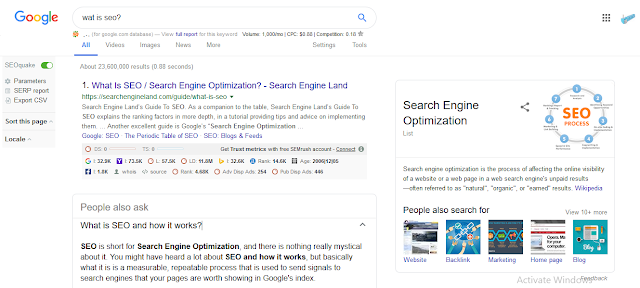

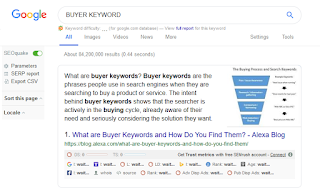
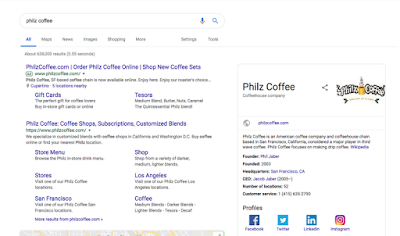
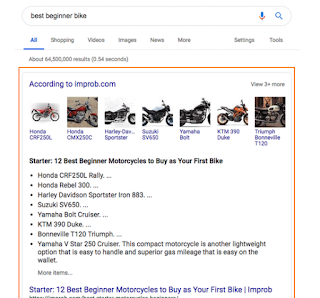

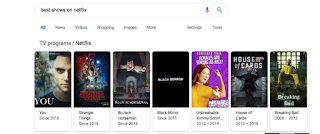







This is a great motivational article. In fact, I am happy with your good work. They publish very supportive data, really. Continue. Continue blogging. Hope you explore your next postpmp certification in malaysia
ReplyDeleteYour this webpage is on legitimate steroids in UK so you are mentioned to visit the site for purchasing just authentic steroids in United Kingdom. I will be glad to see you out there this decent post here.
ReplyDeleteiot courses in delhi
These musings just knocked my socks off. I am happy you have posted this.
ReplyDeletetraining provider in malaysia
Hi Thanks for Sharing this Valuable Information with us: this is very useful for me. Keep it Up.
ReplyDeletedata scientist courses in aurangabad